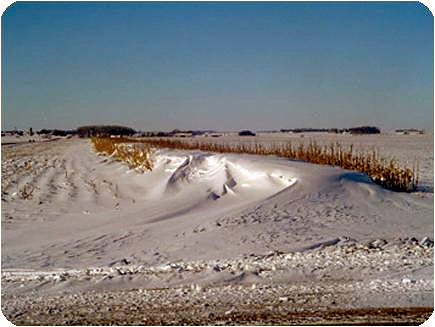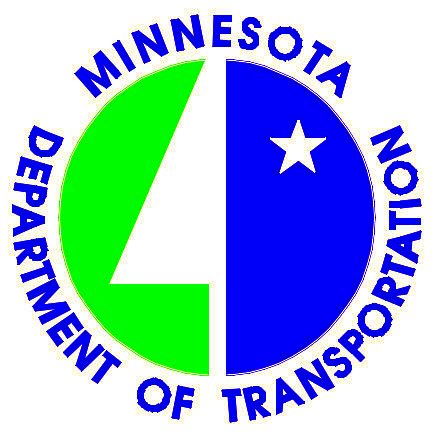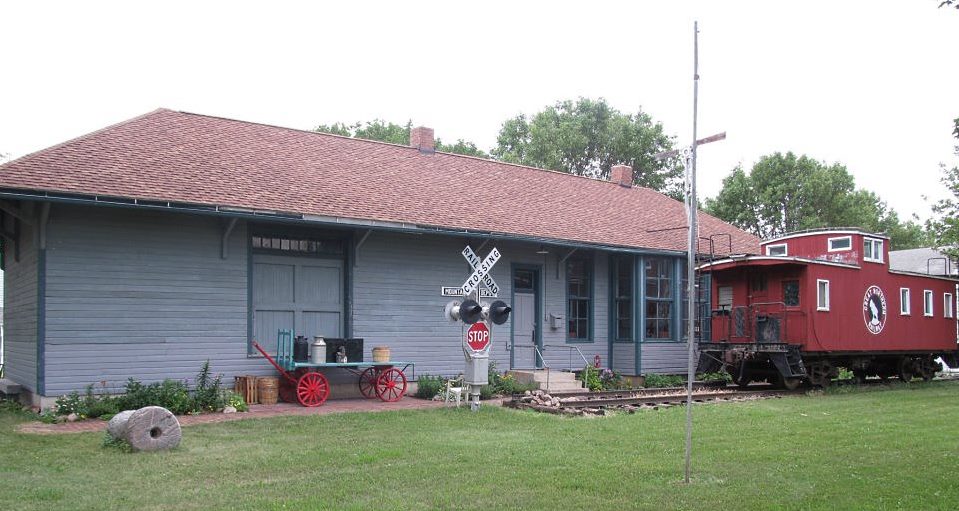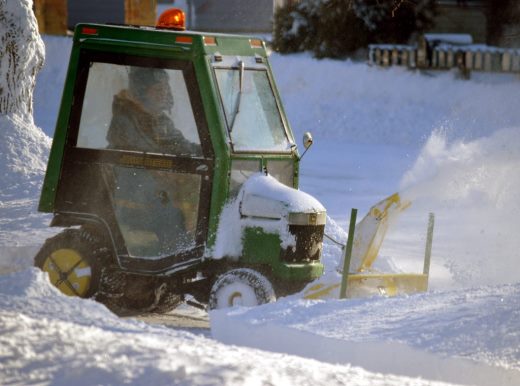Minnesota farmers asked to participate in Living Snow Fence program

Farmers statewide have the opportunity as they begin planting this spring to play a part in creating safer road conditions next winter by participating in the Minnesota Department of Transportation’s c(MnDOT’s) Living Snow Fence program.
Living snow fences are standing corn rows, hay bales or silage bags, as well as trees, shrubs and native grasses located along roads or around communities and farmsteads. Properly designed and placed, these living barriers trap snow as it blows across fields, piling it up before it reaches a road, waterway, farmstead or community. Snow fences can also help maintain clear roadways by capturing blowing snow upwind of a problem area and storing that snow over the winter season.
Under the program, MnDOT pays farm operators to leave standing corn rows, hay bales or silage bags to effectively reduce snow from blowing onto selected state highways. The program agreement typically requires farmers to leave six rows of corn stalks standing approximately 200 feet from the highway centerline.
“The safety benefits of the Living Snow Fence program on local highways are extensive,” said Dan Gullickson, MnDOT’s Living Snow Fence Program coordinator. “Standing corn rows are effective in preventing big snow drifts that lead to stranded motorists; improving driver visibility and reducing vehicle accidents; reducing the use of public taxpayer money by reducing plow time; lessening the impact on the environment with the use of less salt, sand and chemicals, fewer truck trips and less fuel consumption; reducing shipping delays for good and services; increasing crop yields by 10% or more; controlling erosion and reducing spring flooding and serving as visual clues to help drivers find their way.”
Recent research by MnDOT, the University of Minnesota Extension and the University of Minnesota Center for Transportation Studies shows standing corn rows reduced the severity of injuries on curves by 40%.
MnDOT has identified 3,700 state highway sites that have snow and blowing snow problems. Blowing and drifting snow on Minnesota highways is a major safety concern.
“The Living Snow Fence program is a great way for us to give back to our community and be an advocate for safer driving conditions in the winter,” said Louise Kiecker, a farmer in Fairfax. “Our family and friends travel that road daily and they know that this stretch of the highway will be clear. I really see our participation in the program as a public service.”
“We really strive for a targeted approach for living snow fence locations,” Gullickson said. “We specifically choose the areas that use extra snow and ice removal resources.”
Working in partnership with MnDOT and the University of Minnesota Extension, farmers are compensated on a per acre basis using a “Snow Cost Benefit Tool” developed by the University of Minnesota Extension.
“This tool is designed to assess agricultural and MnDOT expenses to determine a fair and reasonable incentive payment for the farmer or landowner,” said Gary Wyatt, University of Minnesota Extension educator.
“Farmers should also be aware that standing corn rows can be handpicked in the fall by youth (4-H, FFA, etc.) or adult groups for the corn or a donation to the organization,” Wyatt said.
Farmers or landowners who want more information about the standing corn row program can visit www.mndot.gov/environment/livingsnowfence/.



















